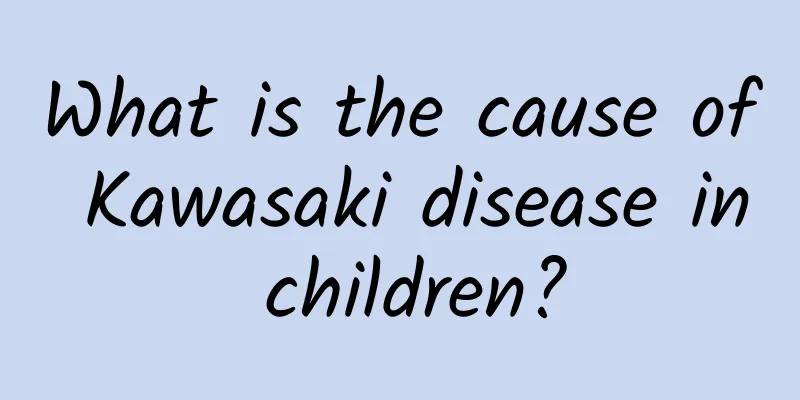Will taking Yinzhihuang harm the baby's health if he has high jaundice?

|
Taking Yinzhihuang for infants with jaundice may have certain effects on the body and should be used with caution. Neonatal jaundice is divided into physiological and pathological types. Physiological jaundice usually disappears on its own without special intervention, but pathological jaundice requires timely medical treatment. Although Yinzhihuang has the effect of relieving jaundice, it may have a certain burden on the gastrointestinal and liver and kidney functions and must be used under the guidance of a doctor. 1 Causes of neonatal jaundice Jaundice is a yellowing of the skin and sclera caused by elevated levels of bilirubin in the body. Physiological jaundice: Most newborns begin to experience jaundice 2-3 days after birth because their livers are not yet mature and cannot process bilirubin quickly. This condition usually recovers naturally 1 to 2 weeks after birth and does not pose a threat to health. Pathological jaundice: usually occurs earlier, lasts longer, or the jaundice is more severe. It may be caused by hemolysis, infection such as neonatal sepsis, mother-fetal blood type incompatibility and other diseases, and needs to be confirmed through professional examination. 2 Effects and possible side effects of Yinzhihuang Yinzhihuang is a traditional Chinese medicine preparation that is often used to relieve jaundice and improve liver function, but it may bring the following risks to newborns: Gastrointestinal effects: Yinzhihuang may irritate the gastrointestinal tract of newborns, causing diarrhea, vomiting and other discomforts. Burden on liver and kidney function: Drug metabolism may increase the burden on the infant's liver and kidneys, especially for newborns whose liver and kidney functions are not yet fully developed. Allergic reactions: Yinzhihuang may also cause drug allergic reactions in some infants, which should not be ignored. 3 Ways to Safely Manage Neonatal Jaundice Observation and breastfeeding: Physiological jaundice usually metabolizes bilirubin through breastfeeding and neonatal excretion. It is recommended to increase the frequency of breastfeeding and promote bowel movements in infants. Light therapy: For mild to moderate jaundice, exposure to blue light is an effective and safe method to help break down bilirubin. Medical intervention: Pathological jaundice requires early diagnosis and treatment, such as drug intervention using Yinzhihuang or other safe drugs, blood transfusion therapy, etc. under the guidance of a doctor. For newborns with high jaundice, parents should take their babies to the hospital in time to determine the type and severity of jaundice through blood tests. They should not use drugs such as Yinzhihuang at will. The doctor will choose the most appropriate treatment plan based on the child's specific situation to avoid health risks caused by improper use of drugs. Regardless of the treatment method, it is crucial to avoid blindly following the trend and ensure the safety of medication. |
<<: How to treat acute laryngitis in children
>>: Treat children with diarrhea by taking Enteritis Ning Granules
Recommend
Pneumonia in children Bronchopneumonia
Pneumonia and bronchopneumonia in children are lo...
What is the reason for the female back waist to be concave
A woman's concave back is usually a reflectio...
What color is the urine of a newborn with jaundice?
What color is the urine of a newborn with jaundic...
What causes overactive bladder?
The main causes of hyperactive bladder include th...
Does polio affect fertility?
Polio is a very serious acute infectious disease....
What are the common types of diarrhea in children? 4 examination methods to find out the cause
Diarrhea in children is a common condition that h...
How much does it cost to cure pneumonia in children?
How much does it cost to cure pneumonia in childr...
How to cure pseudo-jaundice yellow skin? Three ways to treat pseudo-jaundice yellow skin
Pseudo-jaundice can cause our skin to look yellow...
Is sunset yellow harmful to the human body?
Sunset yellow, a food additive, does confuse many...
What are the drugs for treating seizures?
What are the drugs for treating convulsions? The ...
Which hospital is good for treating jaundice?
The occurrence of neonatal jaundice makes patient...
What is the home care method for acute laryngitis in children?
I believe that many new parents are not very clea...
Can congenital heart disease in children be cured?
In modern society, many families have only one ch...
What are the symptoms of chronic cough in children?
Chronic cough in children can be divided into upp...
What are the diagnosis and treatment of polio?
The emergence of polio sequelae has seriously aff...









